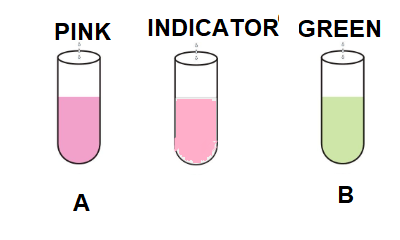Natural Indicators
Natural Indicators: Overview
This Topic covers sub-topics such as Indicators, Lichens, Litmus, Natural Indicators, Red Litmus Paper, Blue Litmus Paper, China Rose as Natural Indicator and, Effect of Indicators on Dilute Solutions
Important Questions on Natural Indicators
The yellow colour of turmeric changes to red on addition of soap solution. When substance P is added to turmeric, there is no change in colour.
Which of the following is definitely true about substance P?
Identify the indicator given below and write the nature of the solution on test tubes A and B.

Peel a beet root with the help of peeler and cut into small pieces with the help of knife. Take these pieces in a mortar and crush well and obtain extract by adding water. Filter the extract through a filter paper and collect filtrate. Take four transparent glasses and label it as A, B, C, D and write your observation in table given.
| S.No. | Glass | Solution | Observations |
| 1. | A | Vinegar | |
| 2. | B | Soda water | |
| 3. | C | Lemon juice | |
| 4. | D | Baking soda solution |
Which of these will dissociate more in water to form hydronium ions?
We use dilute acids with indicators because:
Indicators are always in concentrated form.
China rose is most commonly used natural indicator.
Why indicators are always in diluted form?
Hibiscus flower is an example for natural indicator
Indicators are substances which show change in colour when brought in contact with acid and bases.
Name one indicator which turns red on adding a base.
What colour does the litmus solution indicator turn when added to a base?
On burning a piece of charcoal, a gas evolves. How is it possible to know whether the gas is acidic or basic in nature.
What is an indicator? Give two examples along with their action in acids and bases.
In an experiment, phenolphthalein was added to caustic soda. What will happen if diluted hydrochloric acid is added to this mixture. Explain.
The indicator that turns green in a basic solution _____.
The methyl orange solution turns red in
In a kitchen, the bottles containing baking soda, common salt and tartaric acid get mixed up. How would you differentiate between the following without tasting them ?
(Hint : Make natural indicators from natural materials, such as red cabbage.)
Study the given table carefully.
| Substances | Colour with China rose indicator |
| P | Green |
| Q | Magenta |
P and Q could be respectively
